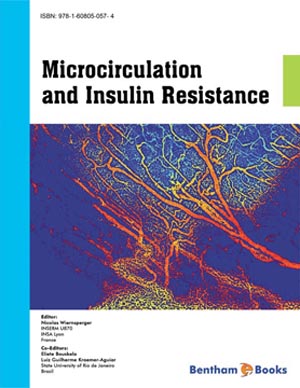Abstract
Microcirculation is an « invisible » world, representing billions of smallest vessels and about 500m2 endothelium, the largest endocrine organ in human body. It is organized in a fractal fashion, in essentially three vessel subtypes: mid-and small sized arterioles (regulating vascular resistance), capillaries (<10µm) and venules which collect blood from tissues. Microvessel structure, effector mechanisms and their regulation are strictly adapted to function and fundamental differences exist between the microvessel segments, as well as between the microvascular and the macrovascular beds. This chapter aims at giving to the unaware reader a short but complete overview of these specificities for a better understanding of forthcoming chapters, which are devoted to describe our concept, namely that microcirculatory defects, eventually appearing very early in life, can cause and/or aggravate insulin resistance leading to diabetes and cardiovascular diseases some decades later.





















